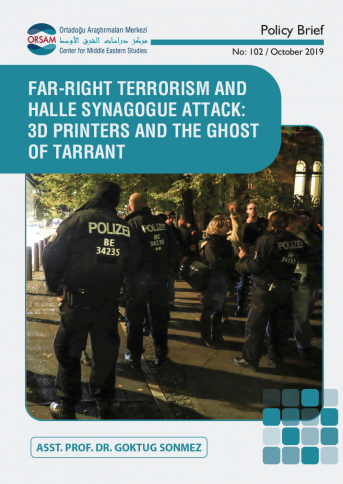
Far-Right Terrorism and Halle Synagogue Attack: 3D Printers and the Ghost of Tarrant
In terms of the way it has been conducted, its target and source of inspiration, the anti-Semitic terrorist attack in Germany provides a quite symbolic case in terms of rising extreme rightwing terrorism, new methods and tools used by terrorists, and threats facing the world in this new climate. In this context, this brief analysis of the Halle attack will be important in terms of combating the newly emerging revolutionized face of terrorism and the ideational roots of farright extremism and related terror attacks. A 40-year-old woman in front of the synagogue was killed in the October 9 attack in Halle, 160 kilometers away from Berlin, along with a 20- year-old person by the far-right terrorist Stephen Balliet, who tried to enter into the synagogue but failed and turned his steps towards a doner shop, which is of significance in the extreme right-wing discourse due to its links with Turcophobia and Islamophobia. In this sense, the socalled synagogue attack can be considered as an anti-Semitic, anti-Turkish and Islamophobic farright terrorist act just as expected within its own ideological framework. Two others were wounded by Balliet before his arrest. Even though only almost a hundred Jews managed to survive there due to the World War II, Halle is now home to a small Jewish population especially from the USSR area after the WWII. Balliet, 27, chose Yom Kippur, the holy day of the Jews, for his attack. He lived in a small town called Bendorf about 40 km from Halle. It was stated by his neighbors that Balliet, with no criminal record, has lived an isolated life with his mother.








